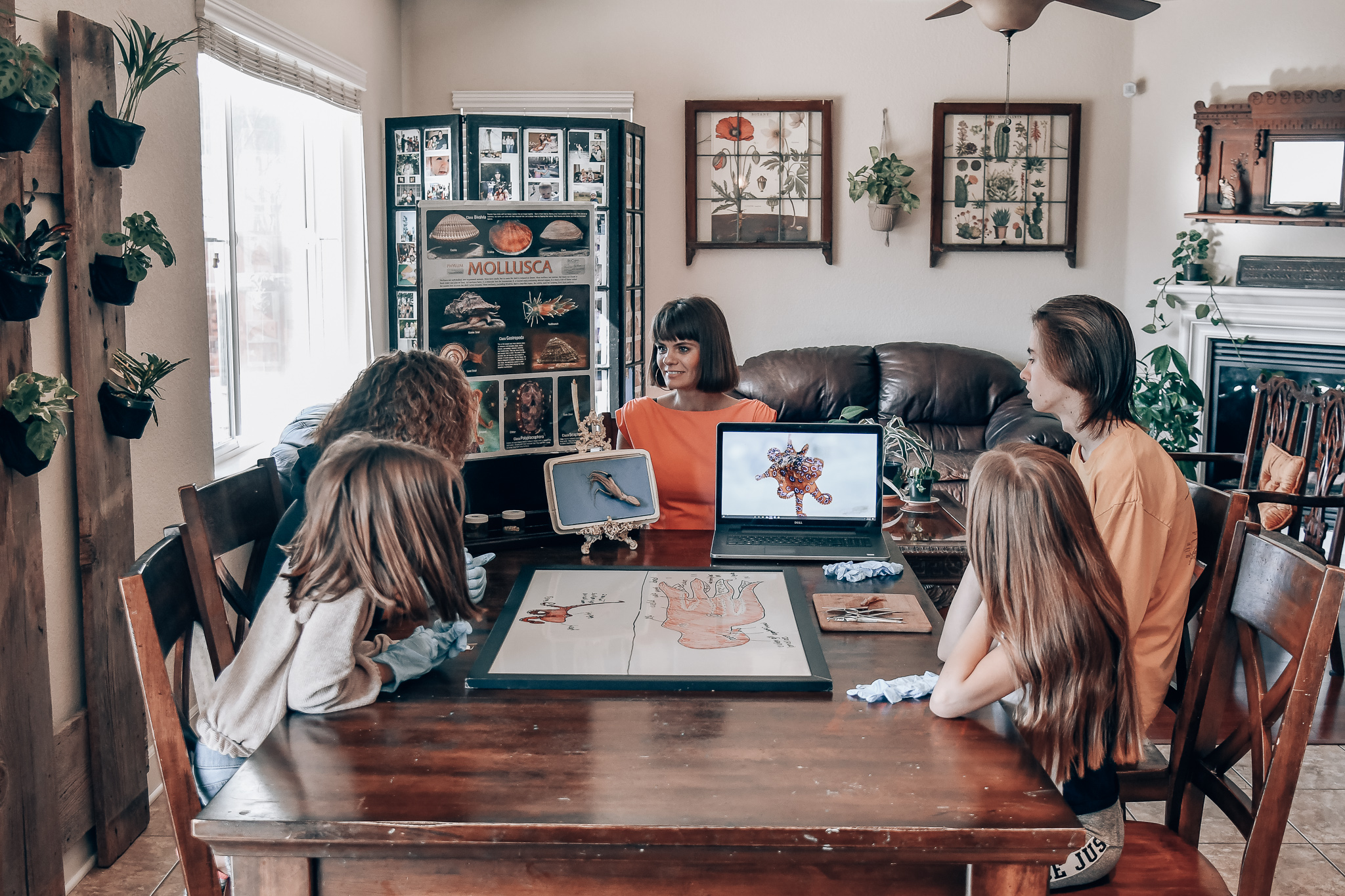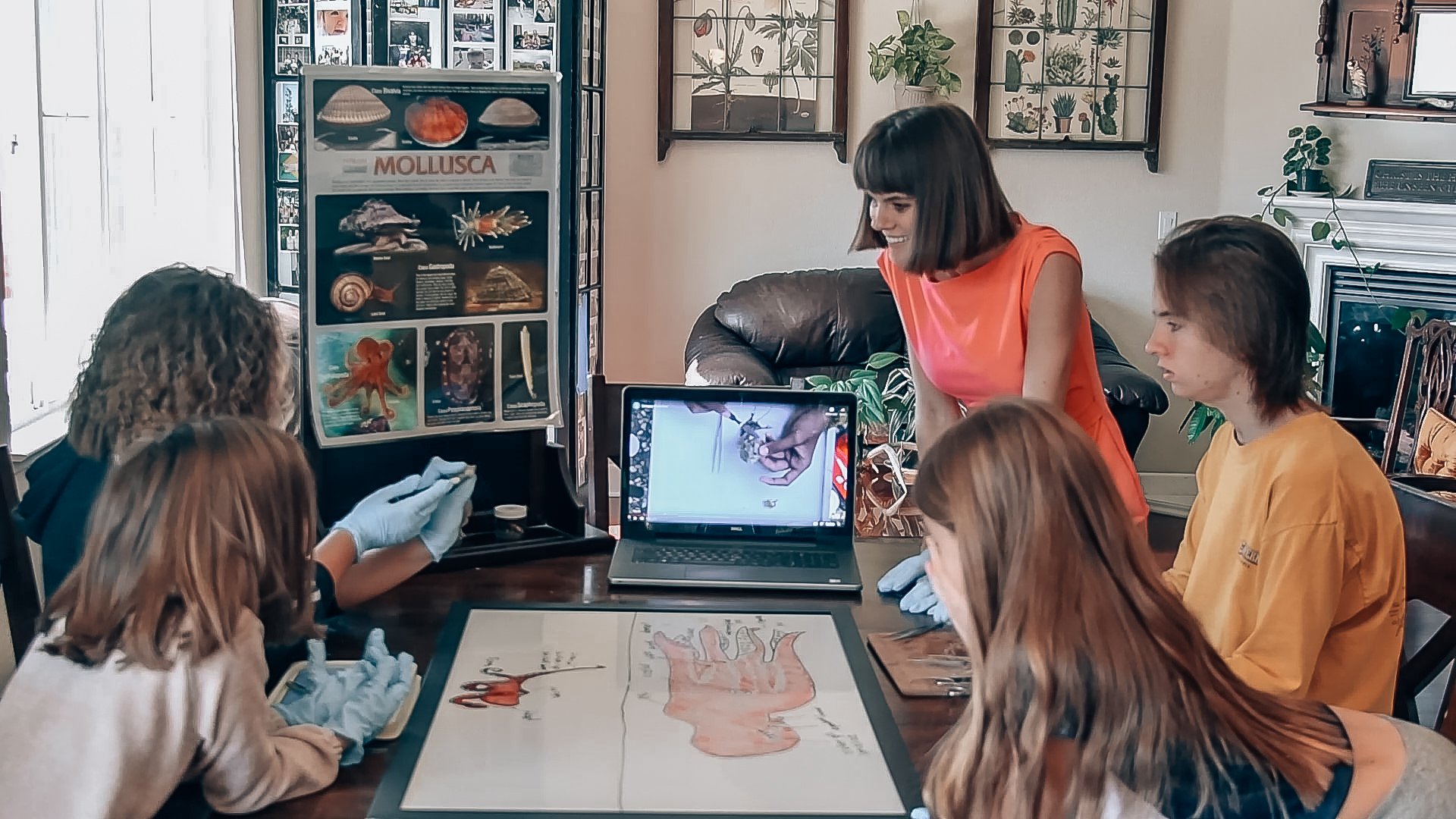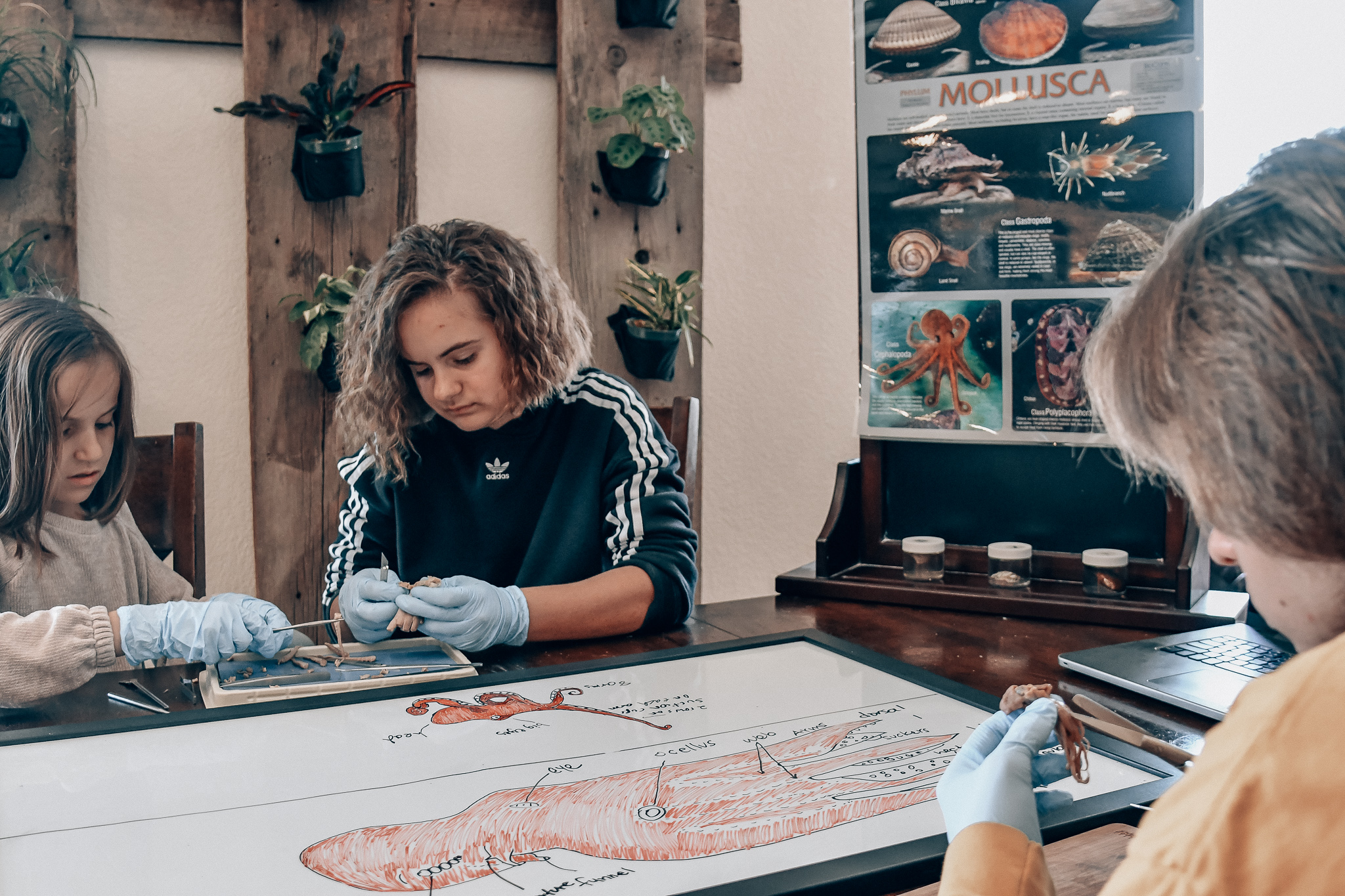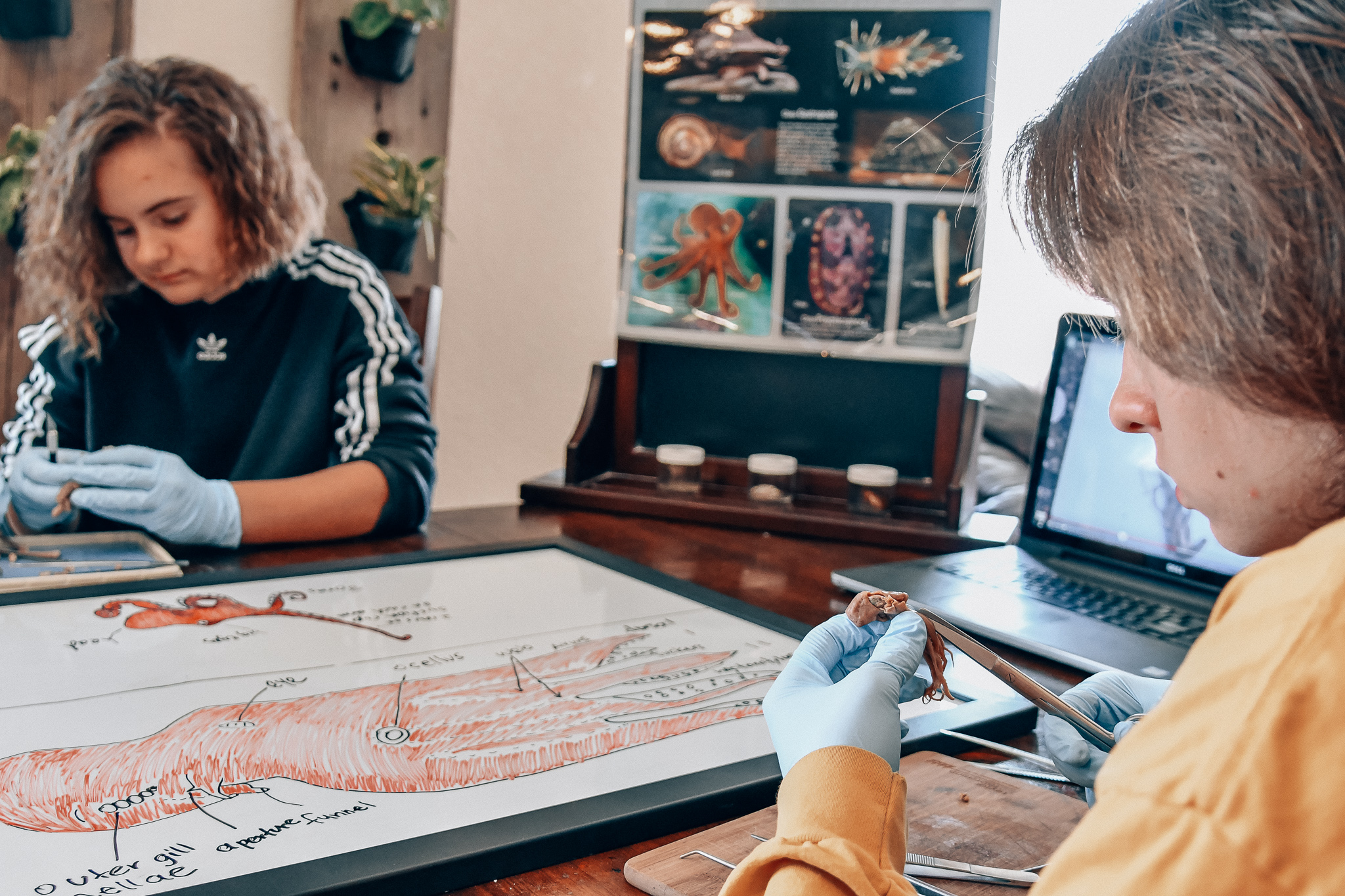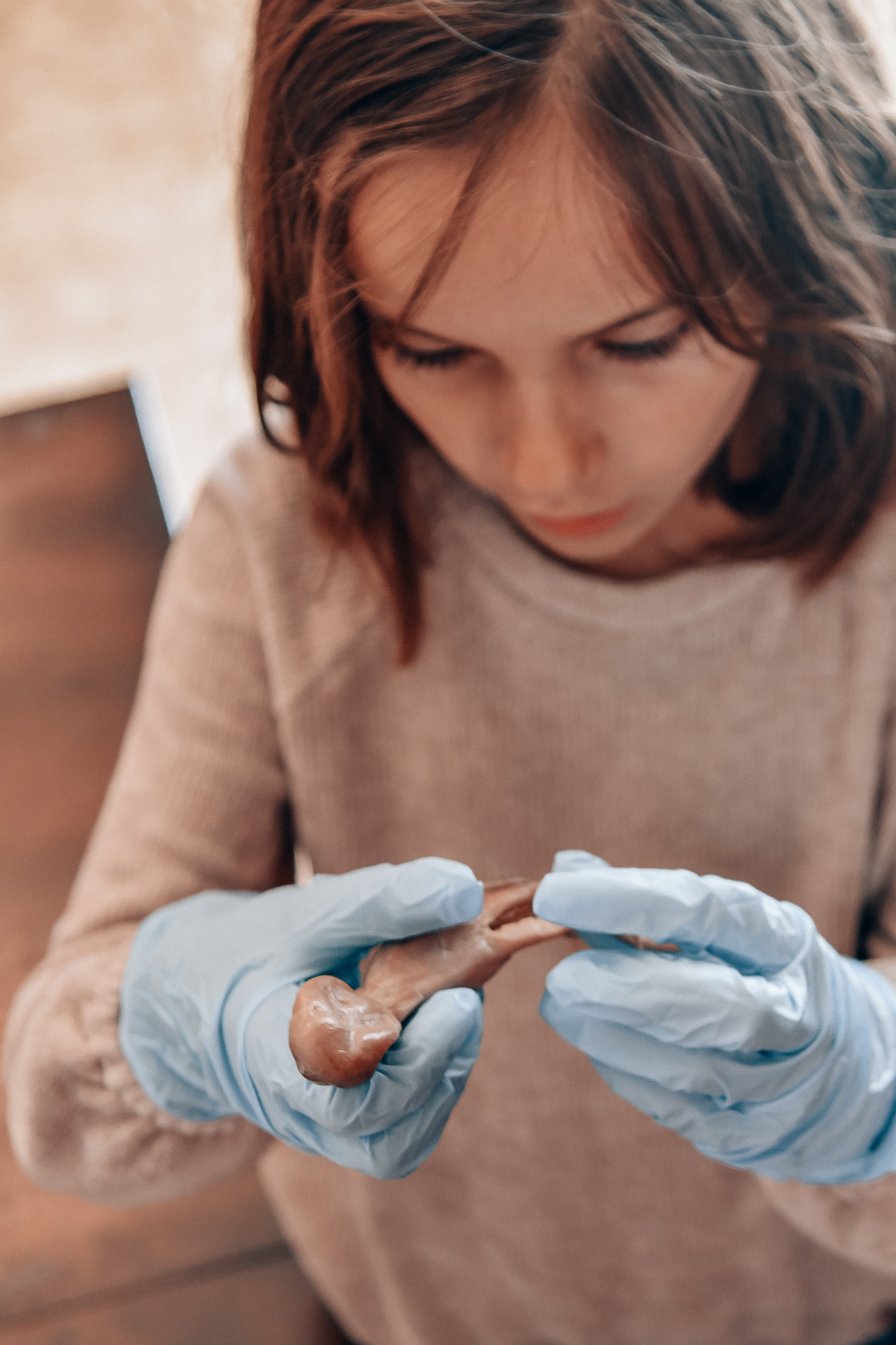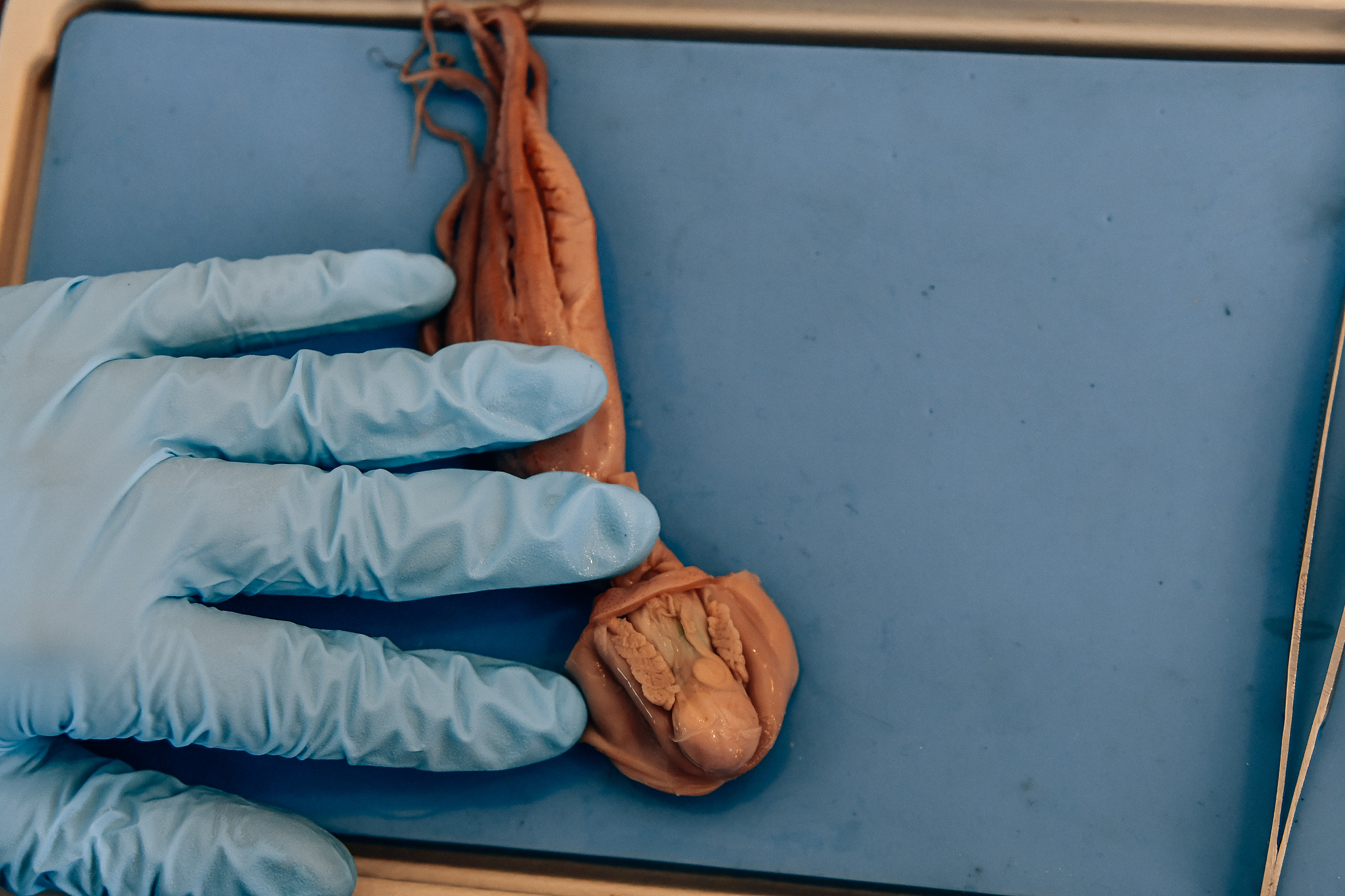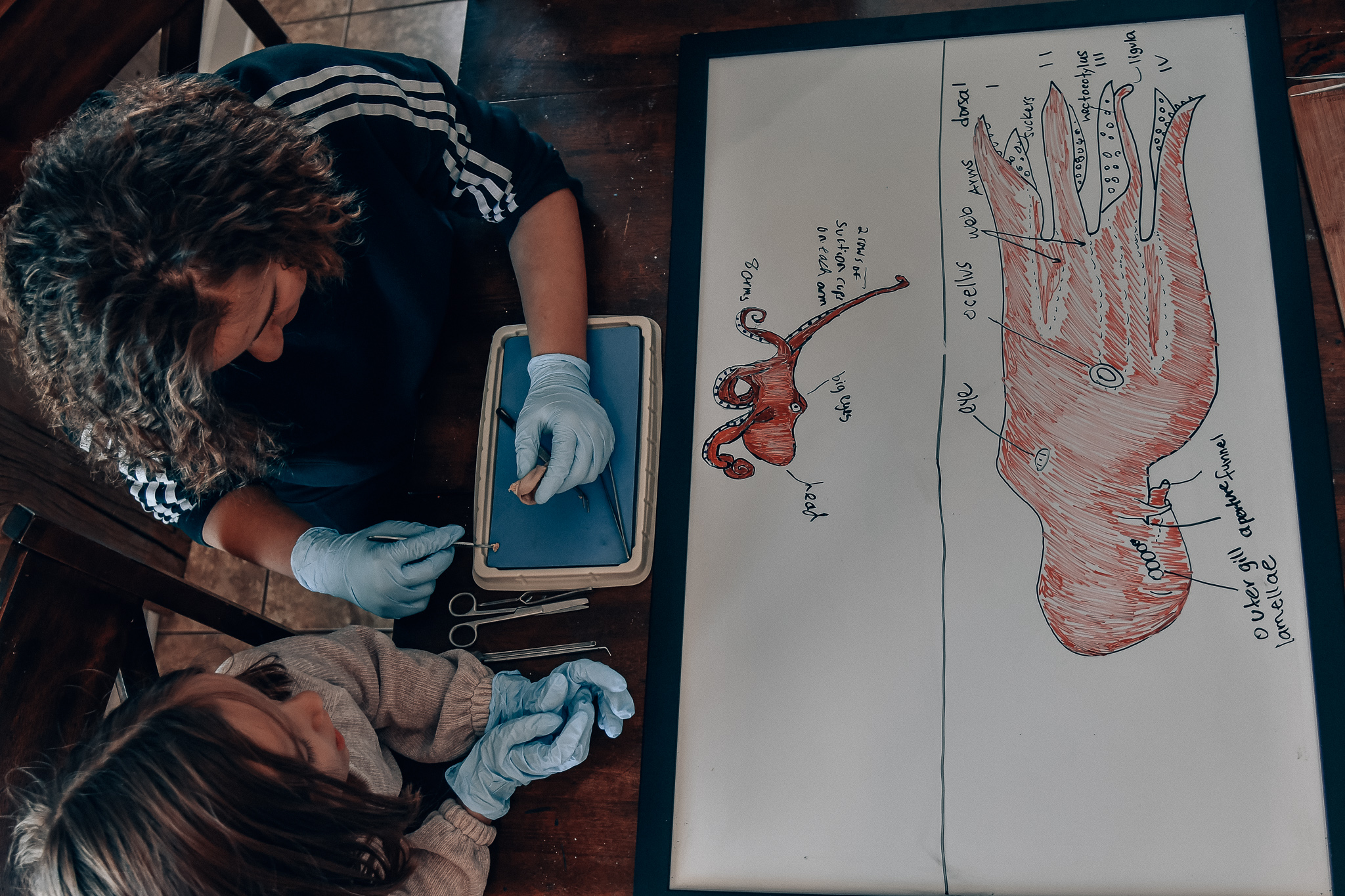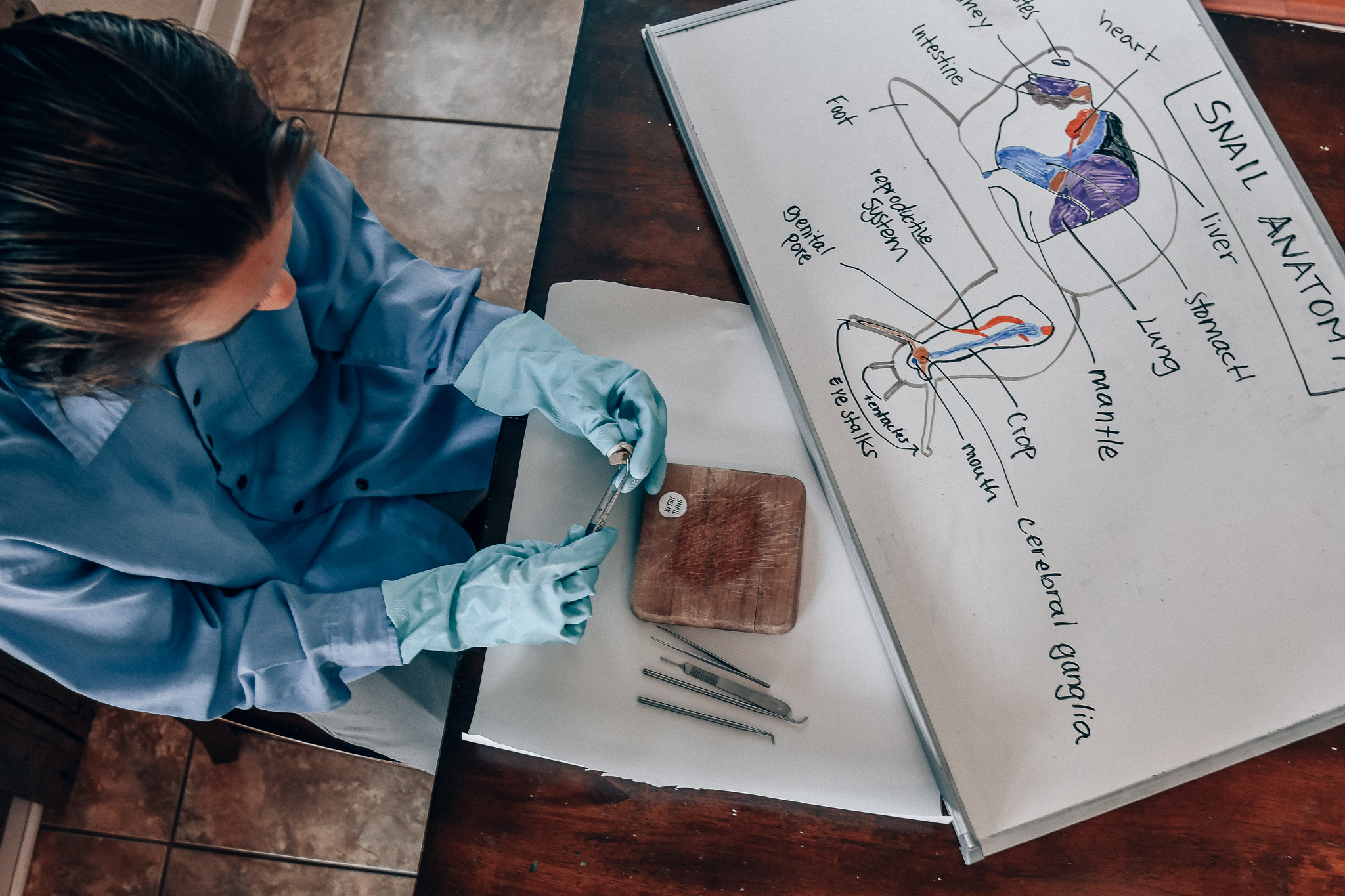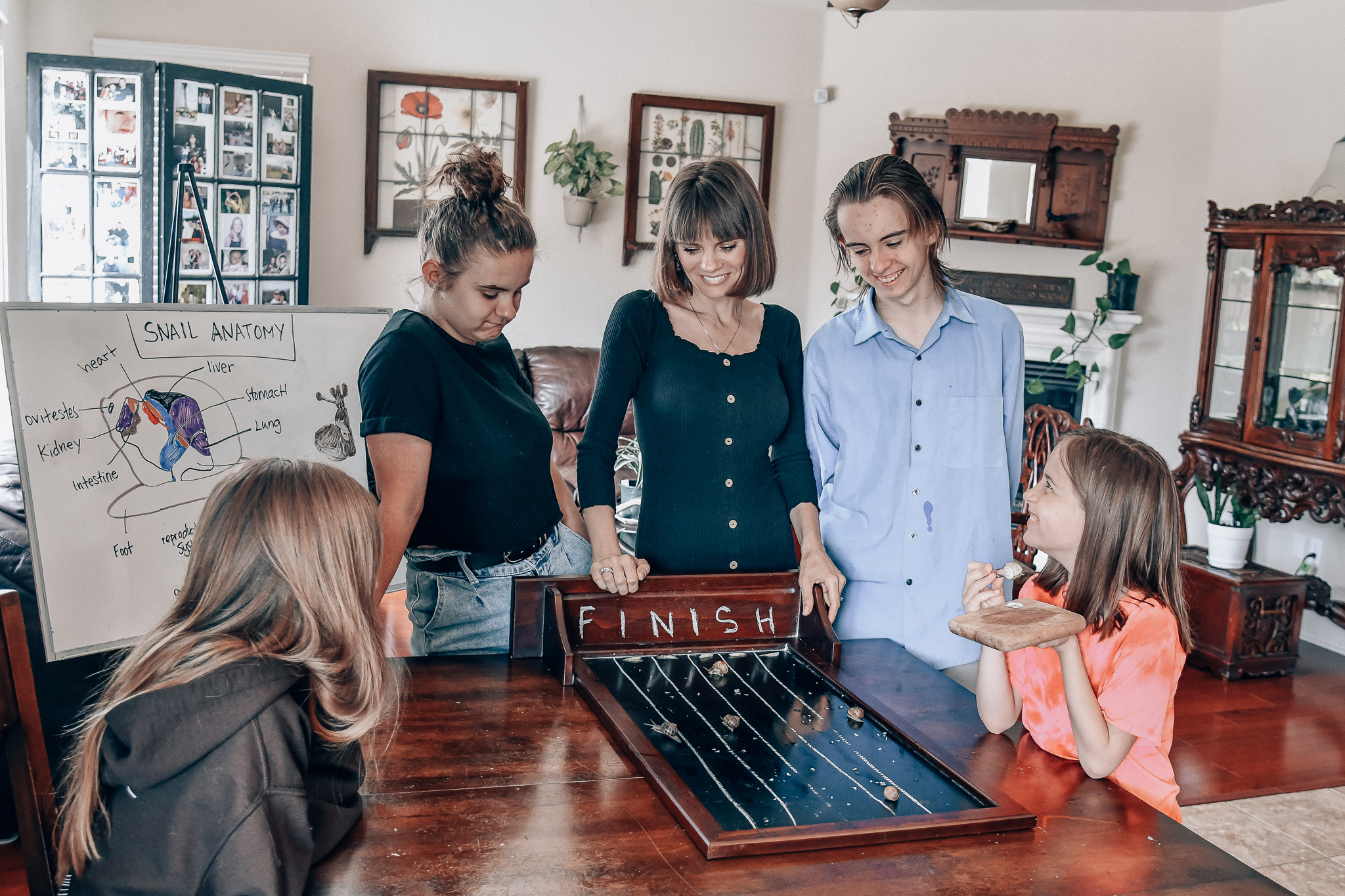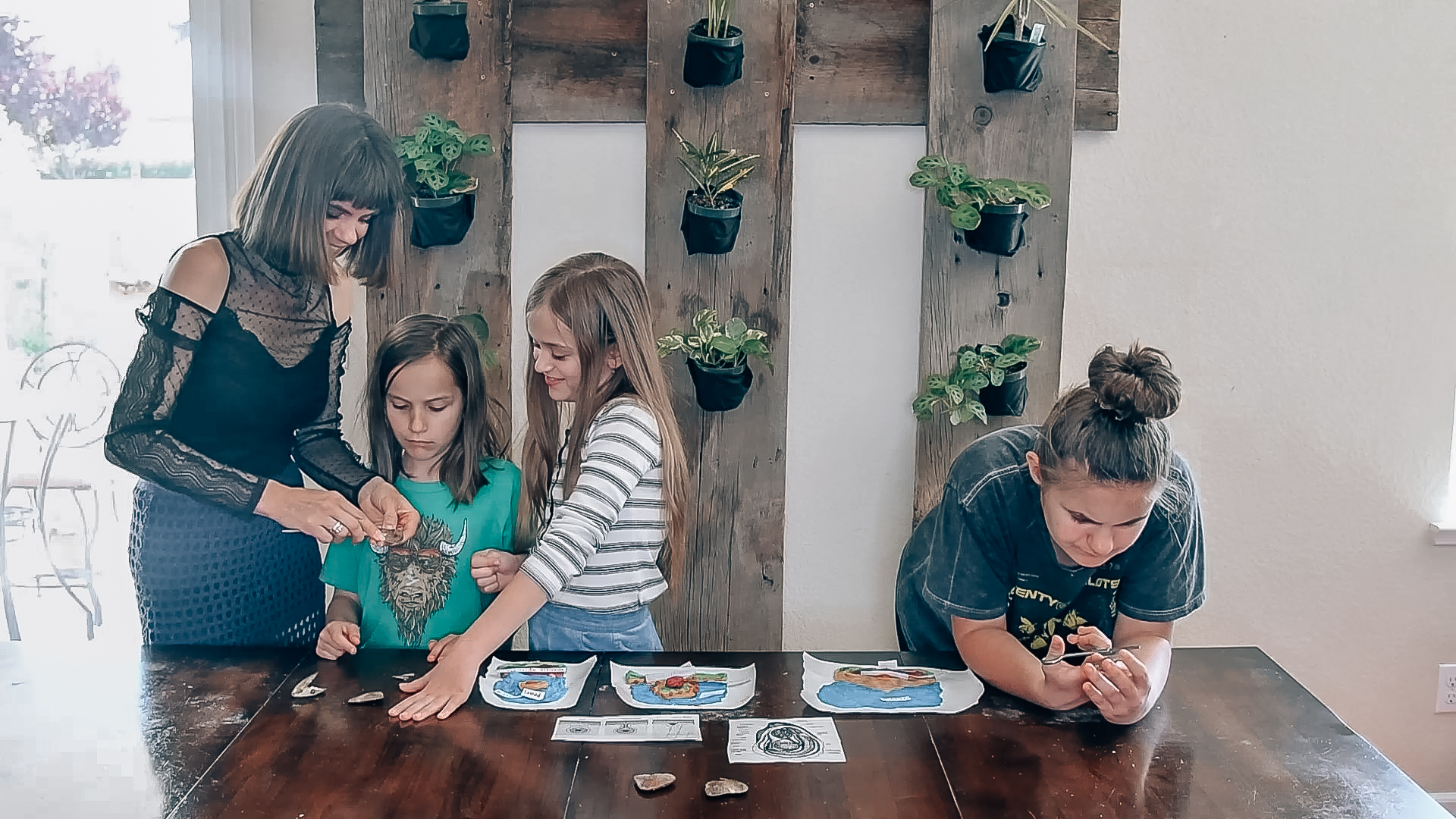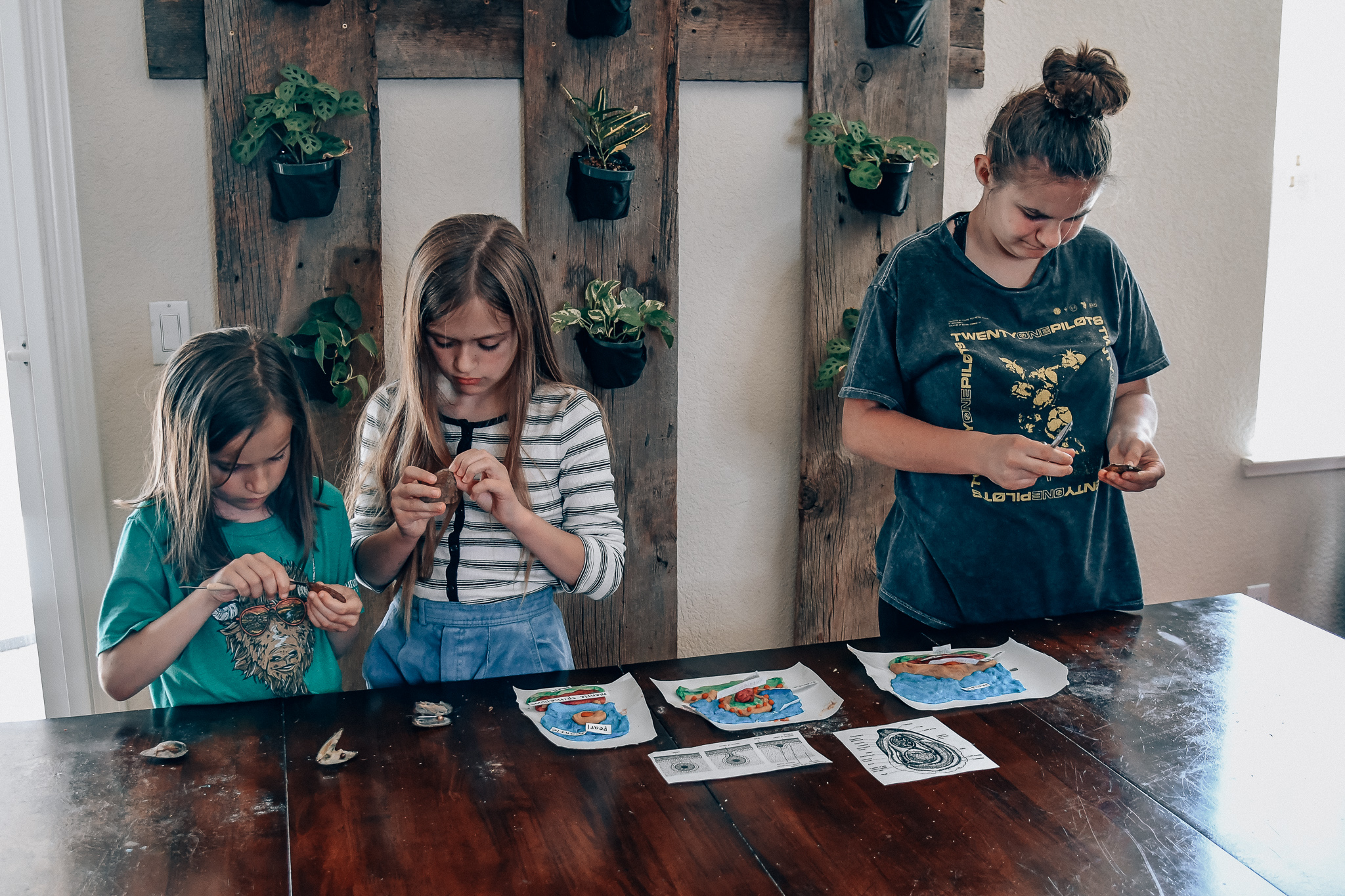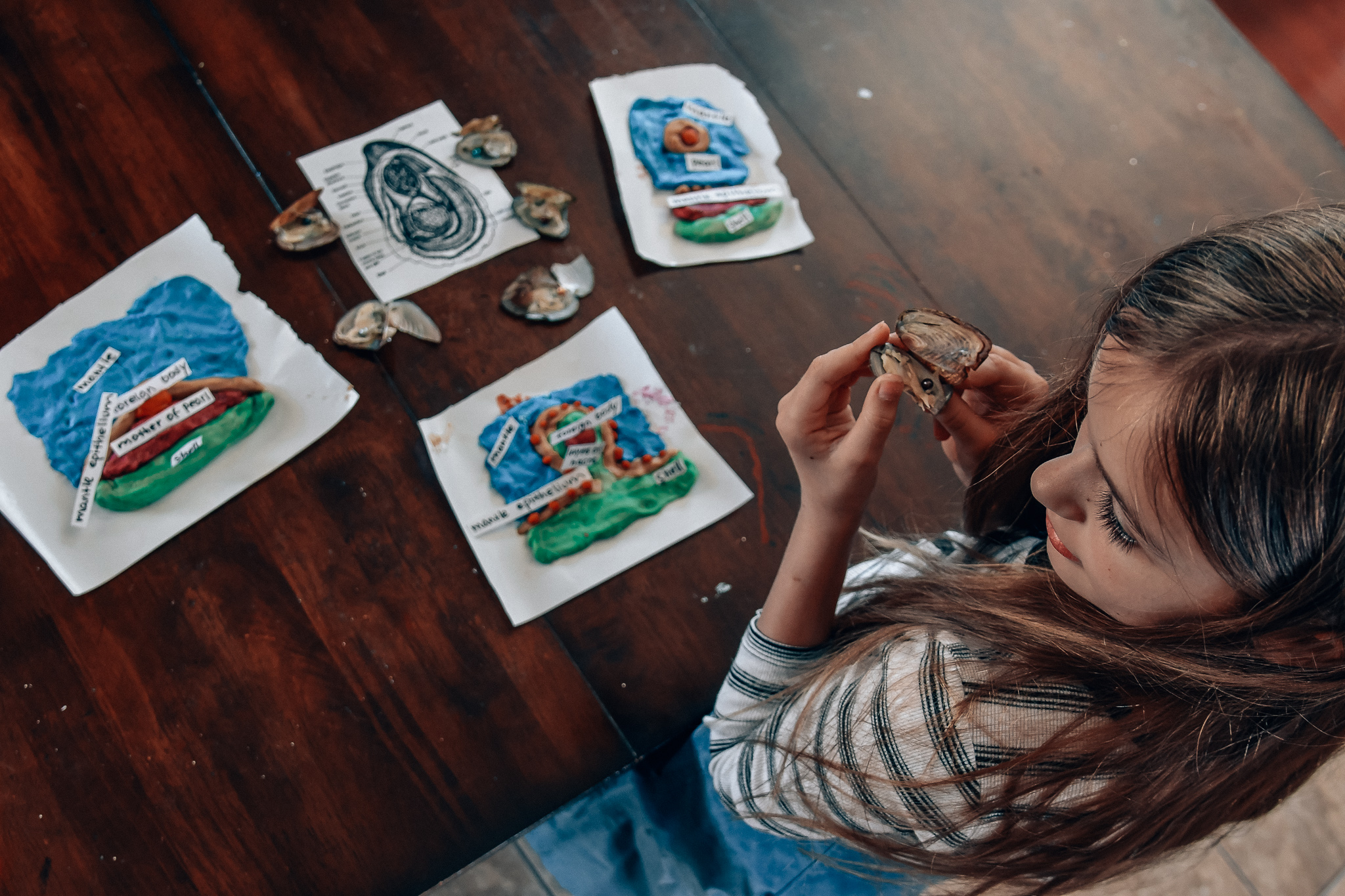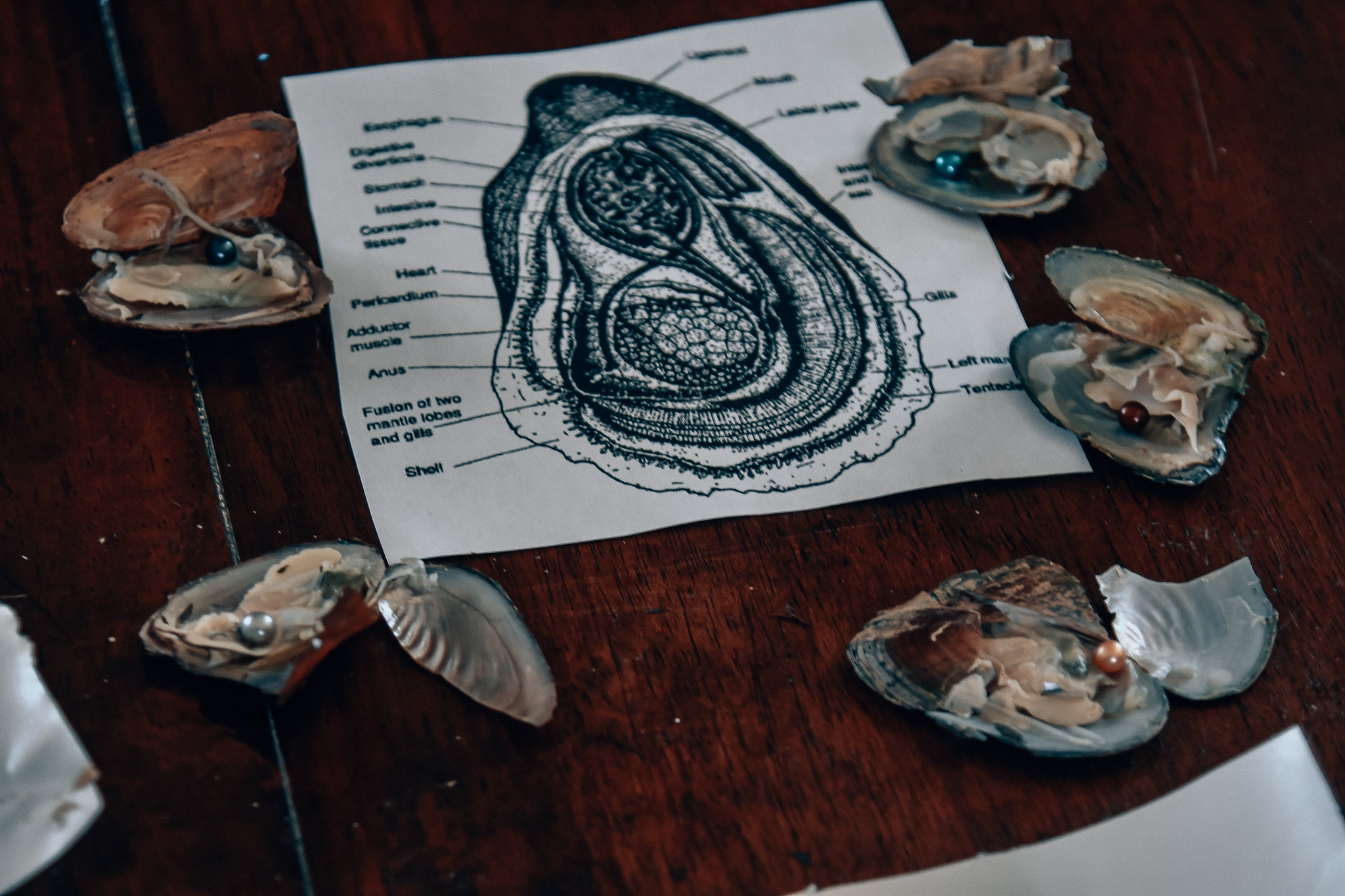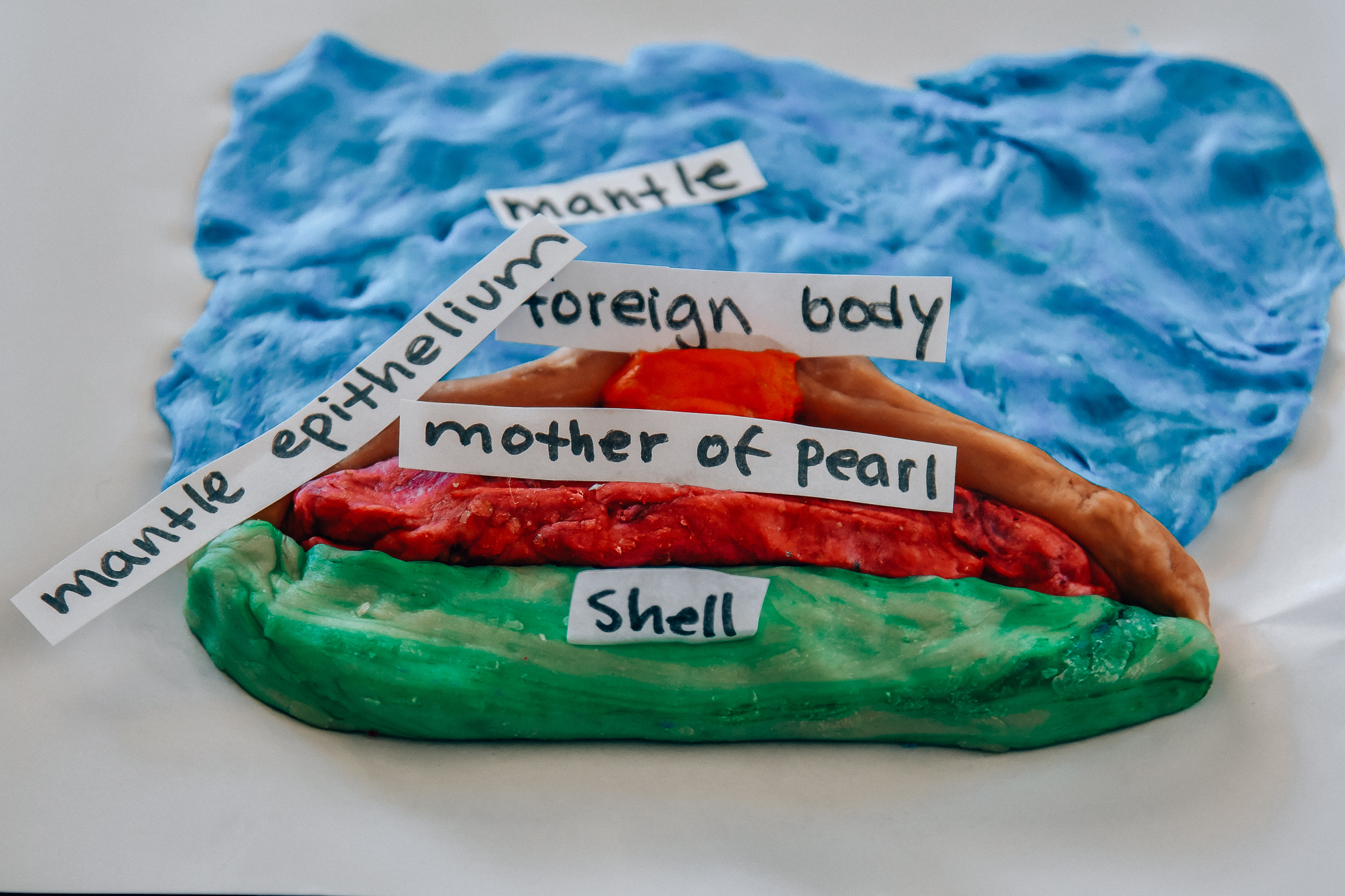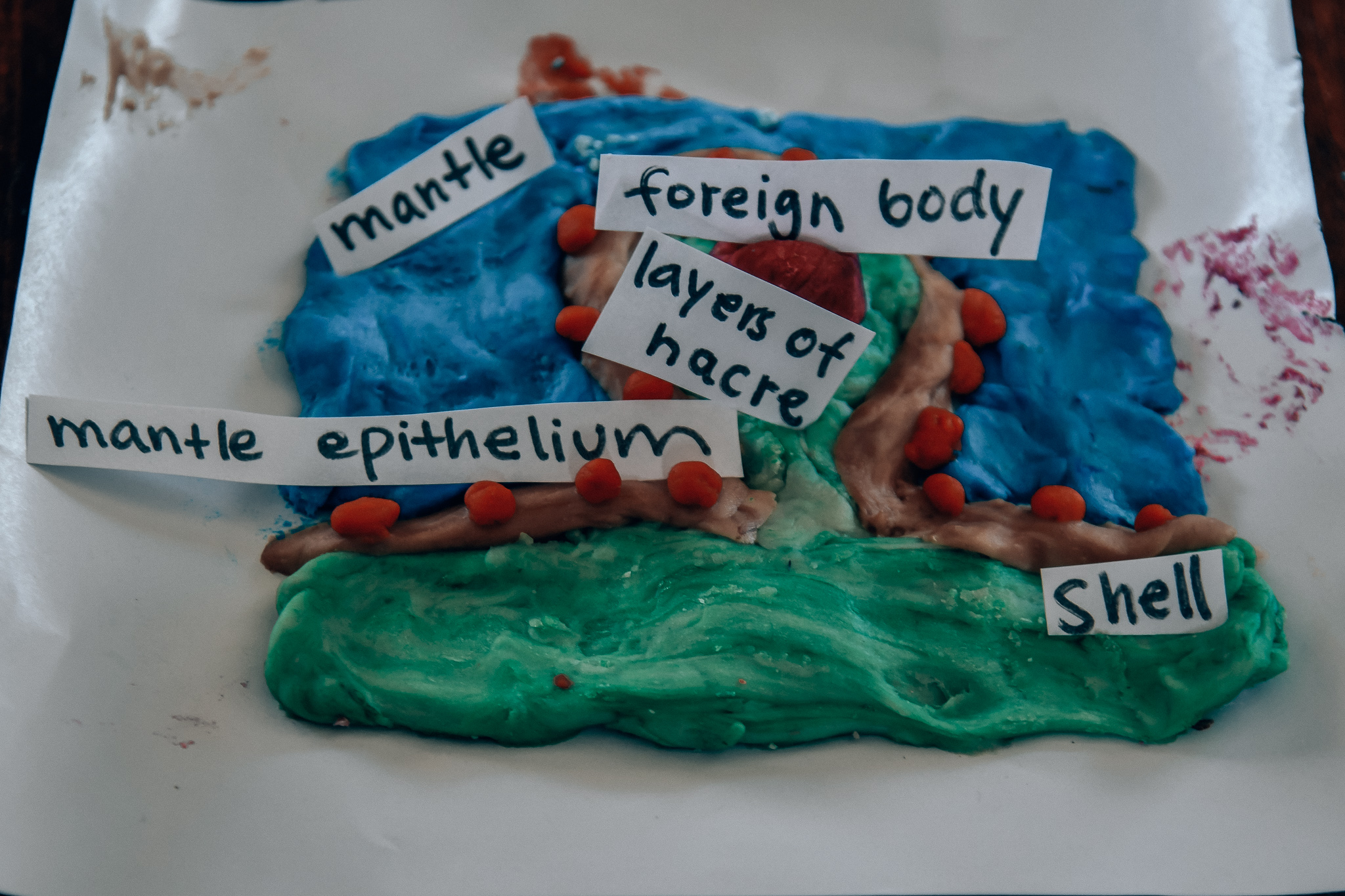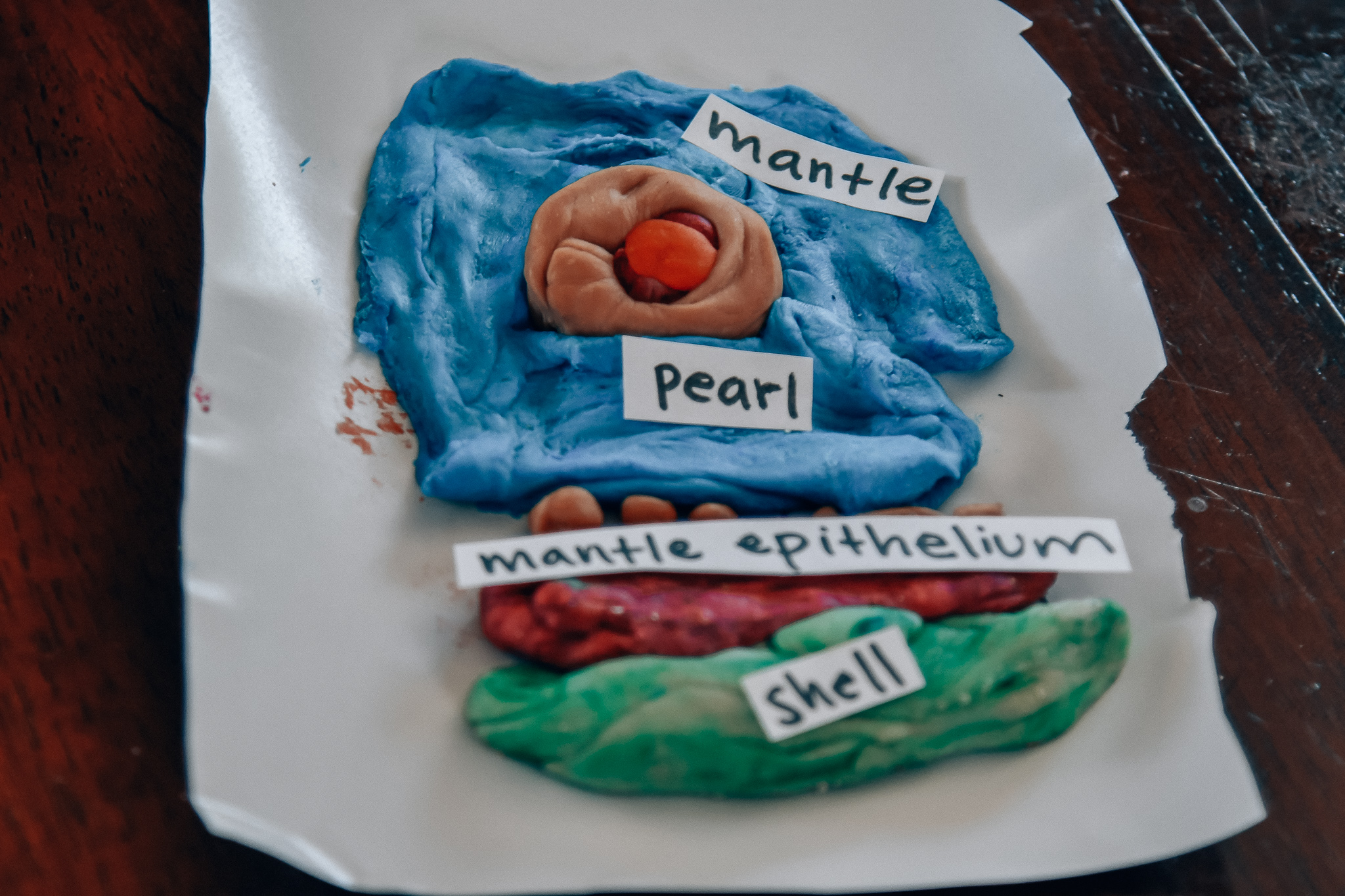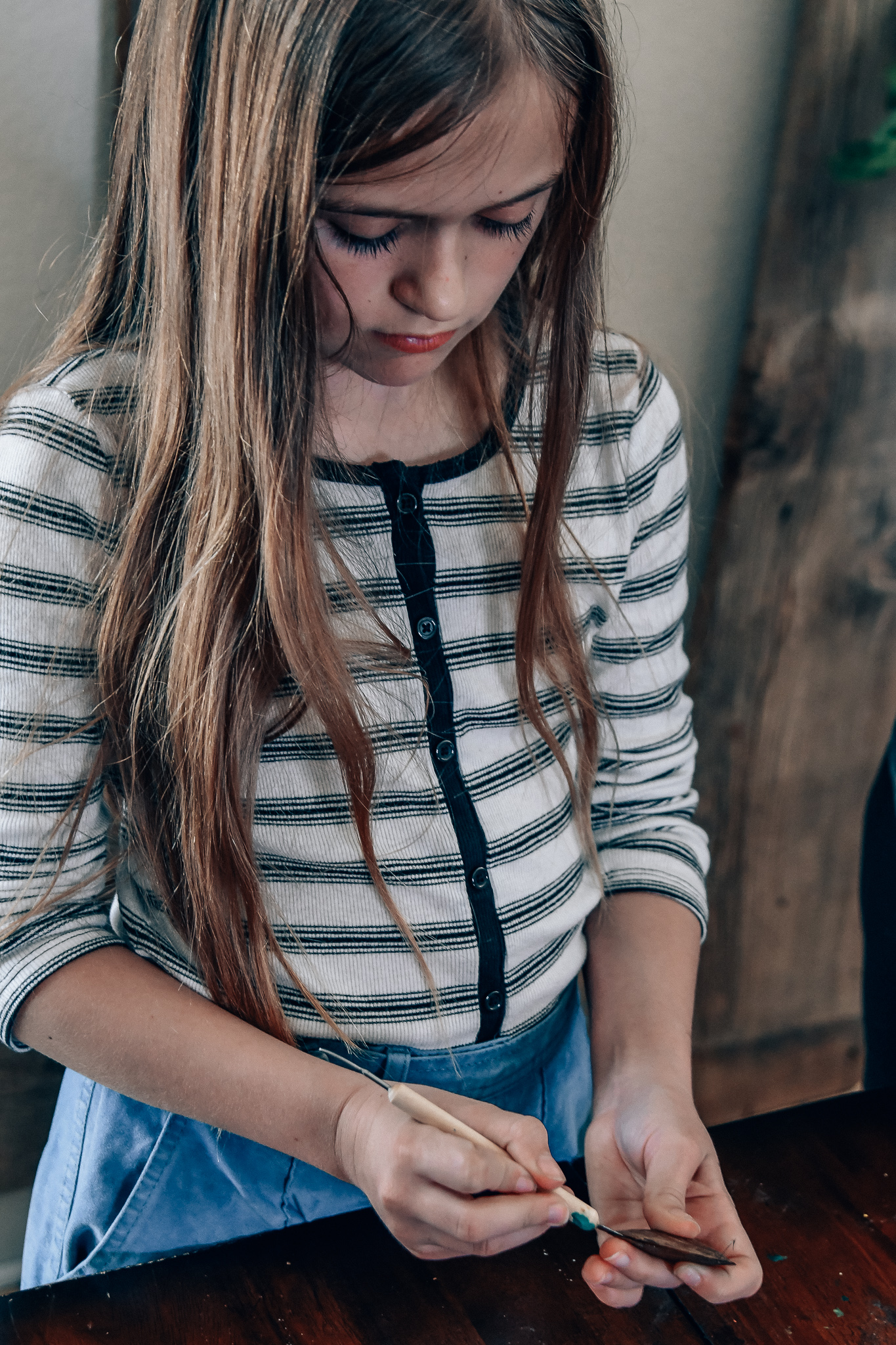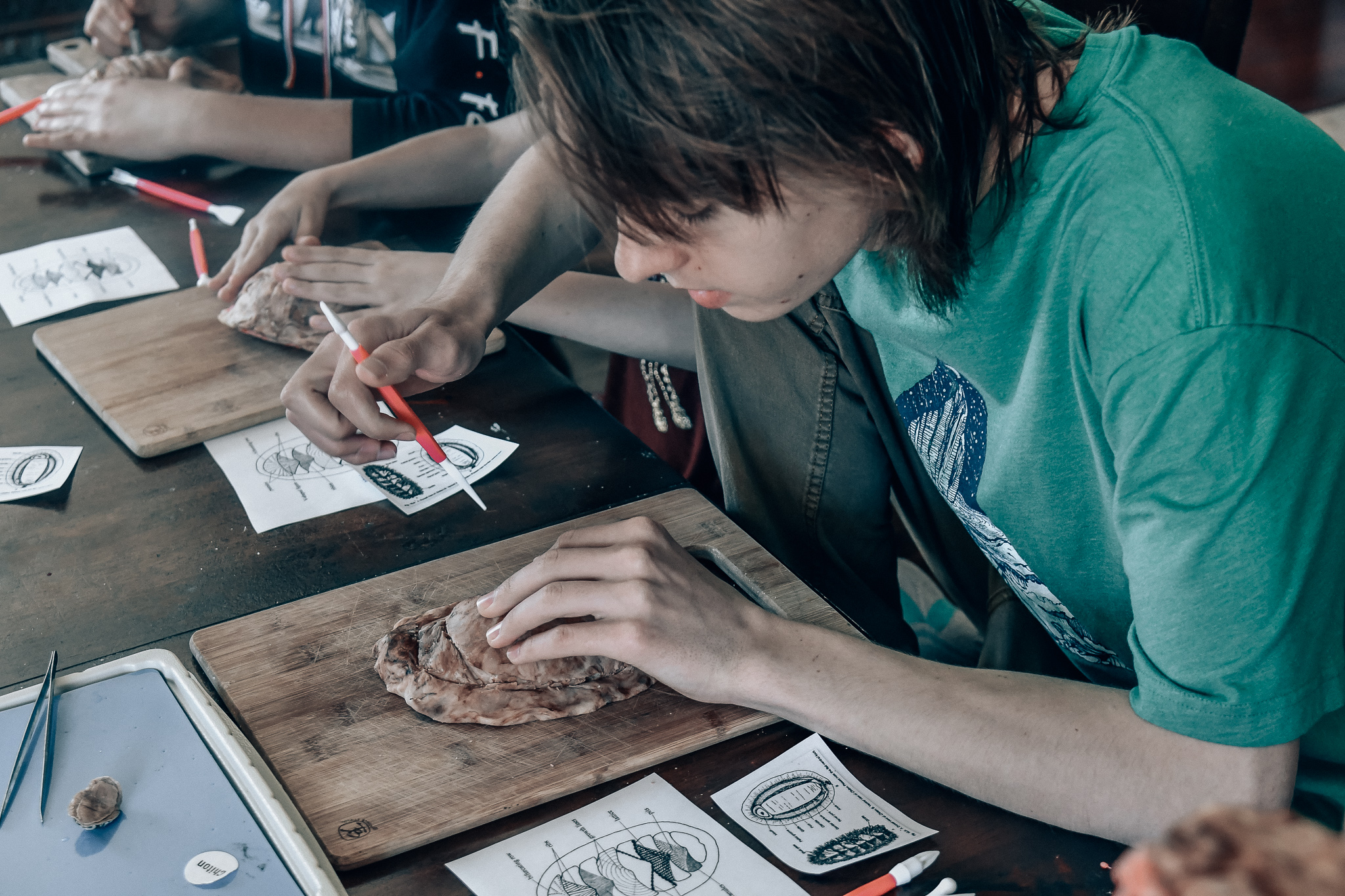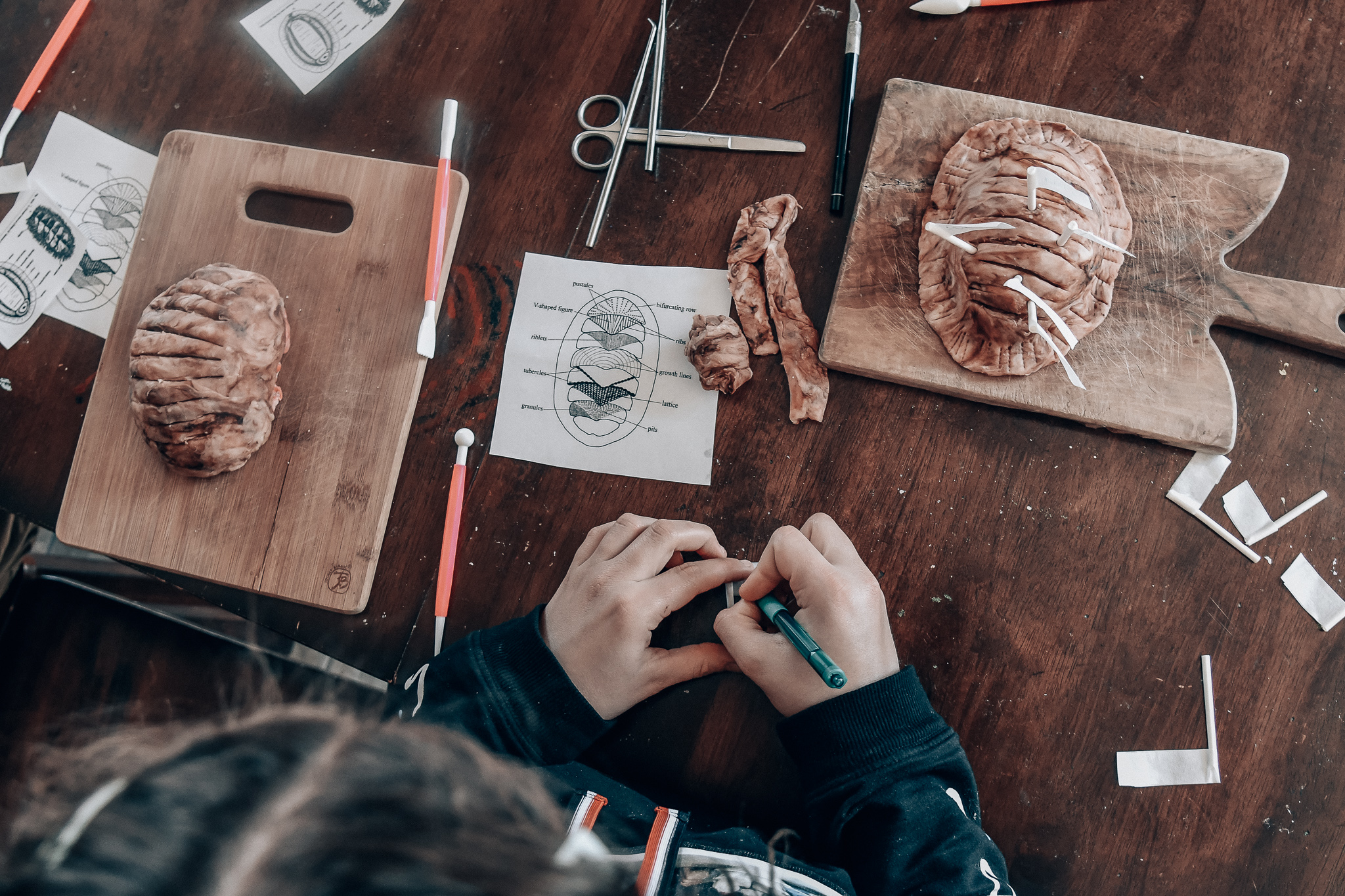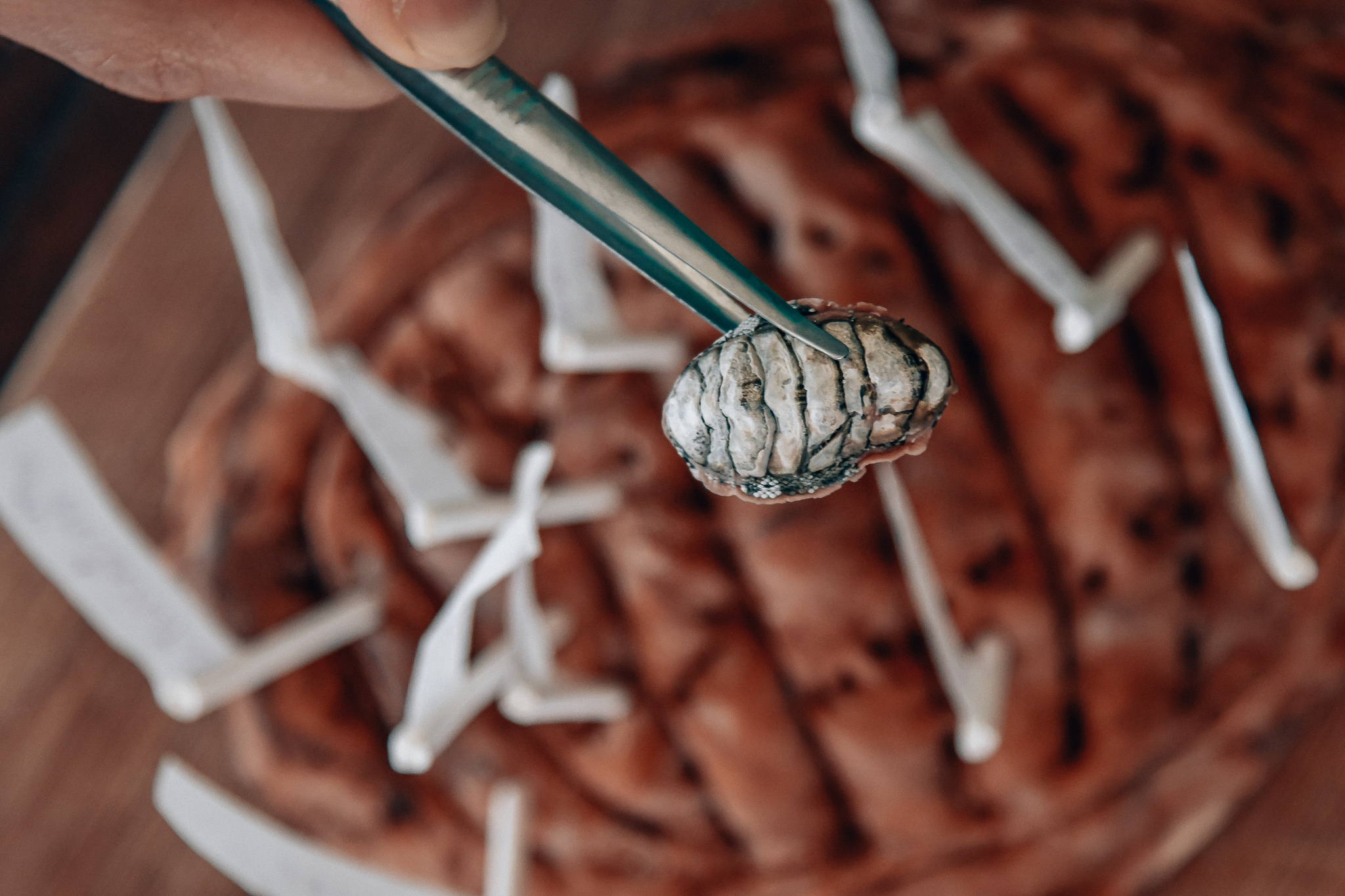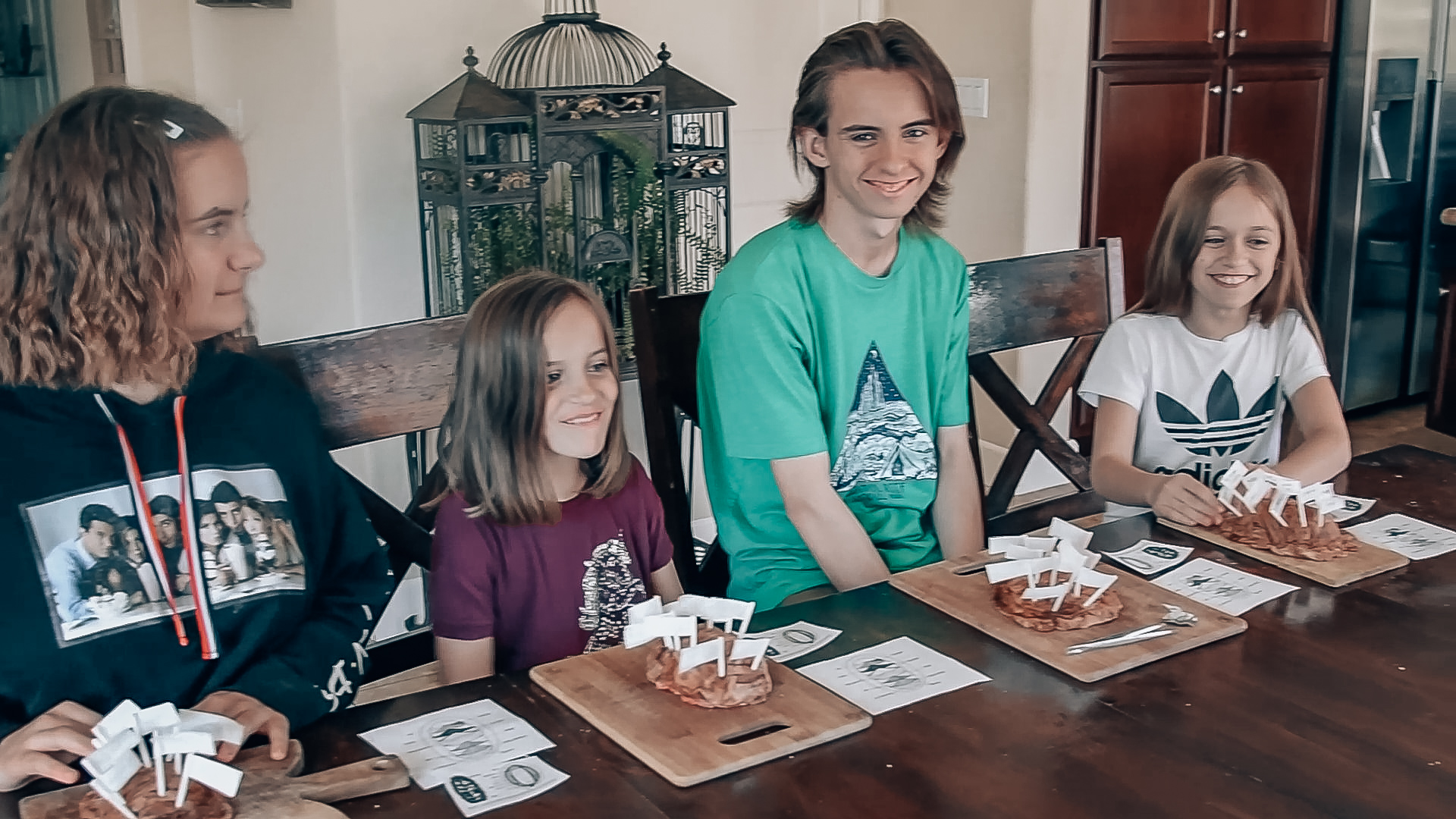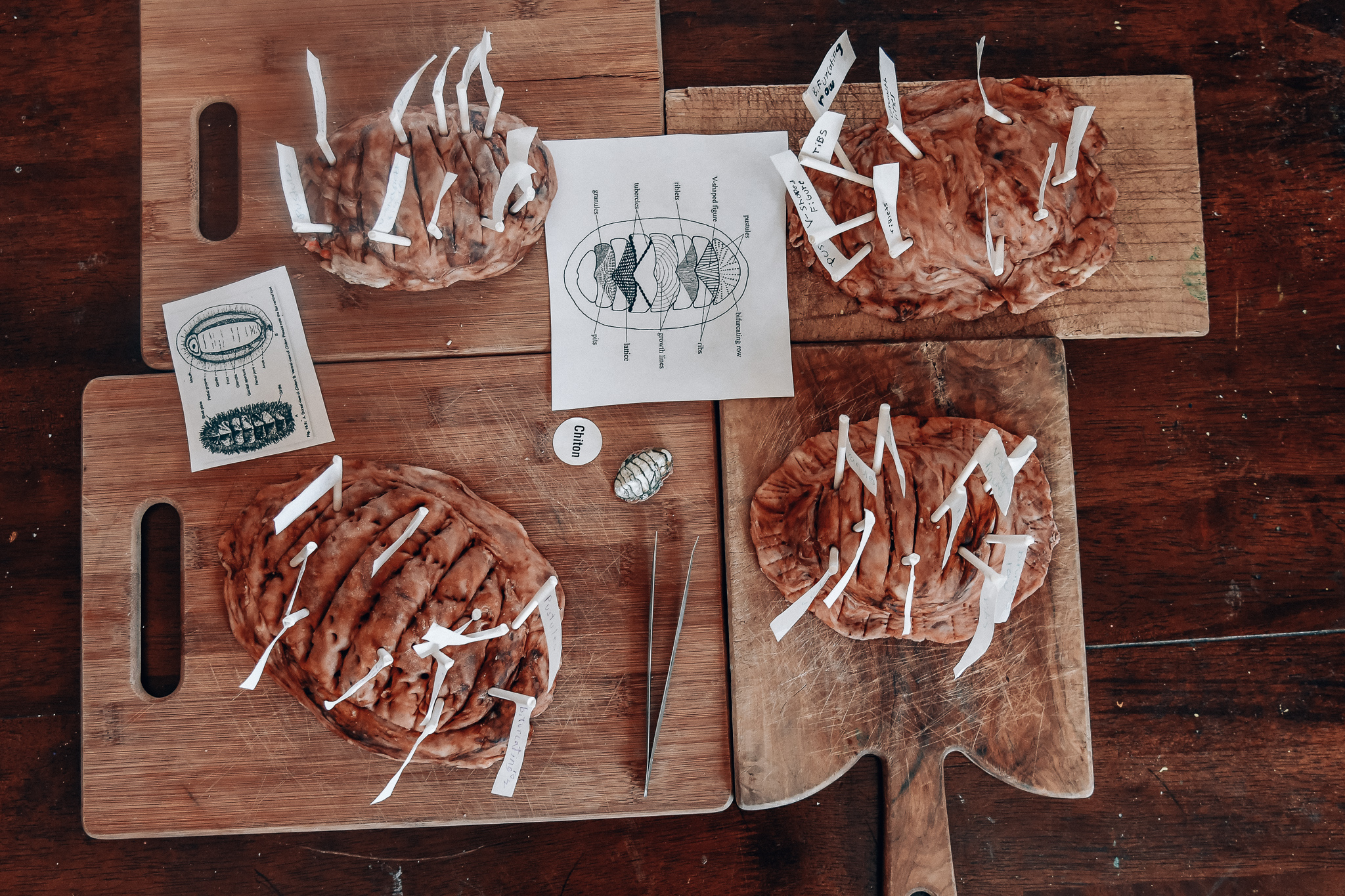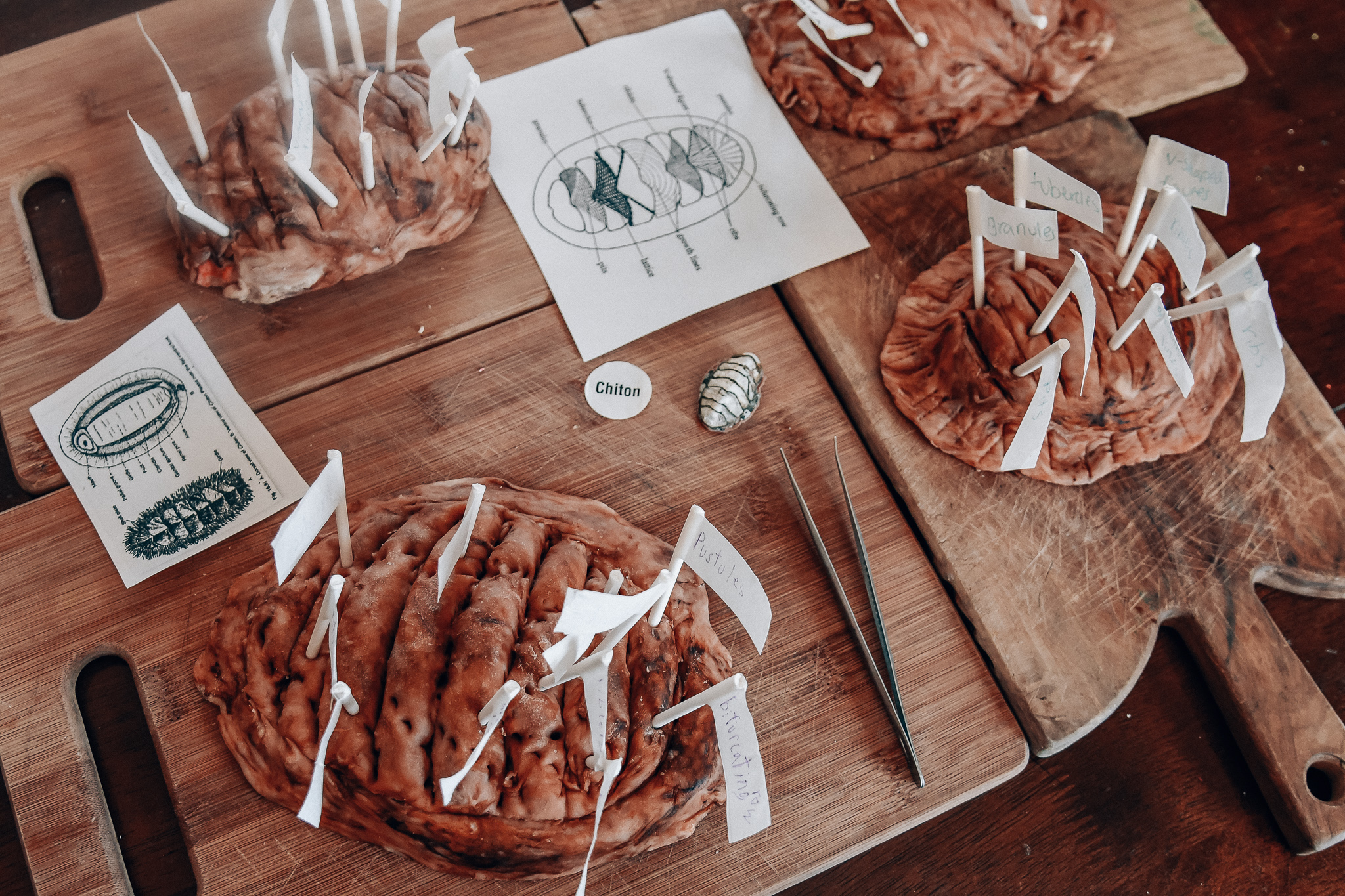If I told you that the garden snail and the giant squid are related, would you believe me? Well, they are related: they are both mollusks. There are about 100,000 species of mollusks. Most mollusks live in water and only some snails and slugs live on land.
So what makes a mollusks a mollusks? Their hard protective shells. While squids and cuttlefish do not have external shells, their shells grow inside their bodies.
Most mollusk’s shells are attached to a mantle which is a layer of tough tissue that protects their heart, reproductive organs, and digestive system.
Most also have a large macular foot and or a special organ called a radula. The radula is a tongue covered with tiny teeth.
But not all mollusks have to have a mantle, shell, radula, and foot. They all have at least one of these features.
Cephalopods
The cephalopods class include octopuses, squid, cuttlefish, and nautiluses. Now most cephalopods have eight arms, a radula, a sharp birdlike beak, and excellent eyesight. They are able to blind their predictors with a cloud of dark ink.
We can’t believe how amazing octopuses are. I mean they are extremely intelligent, they have a built-in jet engine, they can change their skin color, and have a venomous bite.
Because they are made mostly out of soft tissue, they can squeeze through any opening that is larger than their beaks.
To our surprise octopuses don’t live long. They usually live one to two years. This is because both sexes die shortly after reproducing. There is only one octopus that we as humans have to watch out for and that is the blue-ringed octopus. Their bite is painless but their potent venom can cause paralysis within minutes.
Gastropods
Gastropods are land snails, sea slugs, abalones, winkles, cowries, and cone shells.
We chose to study the land snail.
Most of the land snails are pulmonates which means that they have a lung and breathe air.
Now land snails have one strong muscular foot. The mucus helps them to crawl over rough surfaces and prevents their body from drying out. Just like all other mollusks, the land snail has a mantle and they have one or two pairs of tentacles on their head.
Did you know that snails hatch out of their egg with a little shell in place? Yep, the shell continues to grow.
We collected five different snails and put them on a race track. To encourage them to move we covered the race track with cucumber juice.
Peter’s snail won. Mine did not even move.
Bivalves
This type of mollusks are clams, oysters, scallops, and mussels. Now bivalves have hinged shells that open and close. They open their shells to eat and breath. If bivalves sense some kind of threat or danger they will close shut. If fact, they seal their shells so tightly that they can survive out of water for weeks.
We decided to learn about oysters and how pearls are formed.
Pearls belong to a group of material known as gemstones.
Other Mollusks : Chitons
The other mollusks include chitons and tusk shells. We studied the chitons.
Chitons are pretty cool. Their shell is composed of eight separate plates. This keeps chitons protected as well as allows them to flex upward.
They cling to rocks with their large foot. Because they can not withdraw into their shells they will attach firmly to a rock when they feel threatened. They feed on algae.
To make your very own play dough you will need 1 cup of flour, 1/4 cups of salt, 1/2 cup of warm water, a few drops of oil, and some food coloring. You want to mix the salt with the flour. In a separate bowl mix the water with the food coloring and oil. Then slowly add the dry mixture to the wet mixture. If it is still sticky add more flour.
I offer one on one unit study coaching and help you create your very own unit studies :here
Opportunity to work with me : here
Thank you for reading our blog post. We share a new blog post every Thursday at 8 pm.

